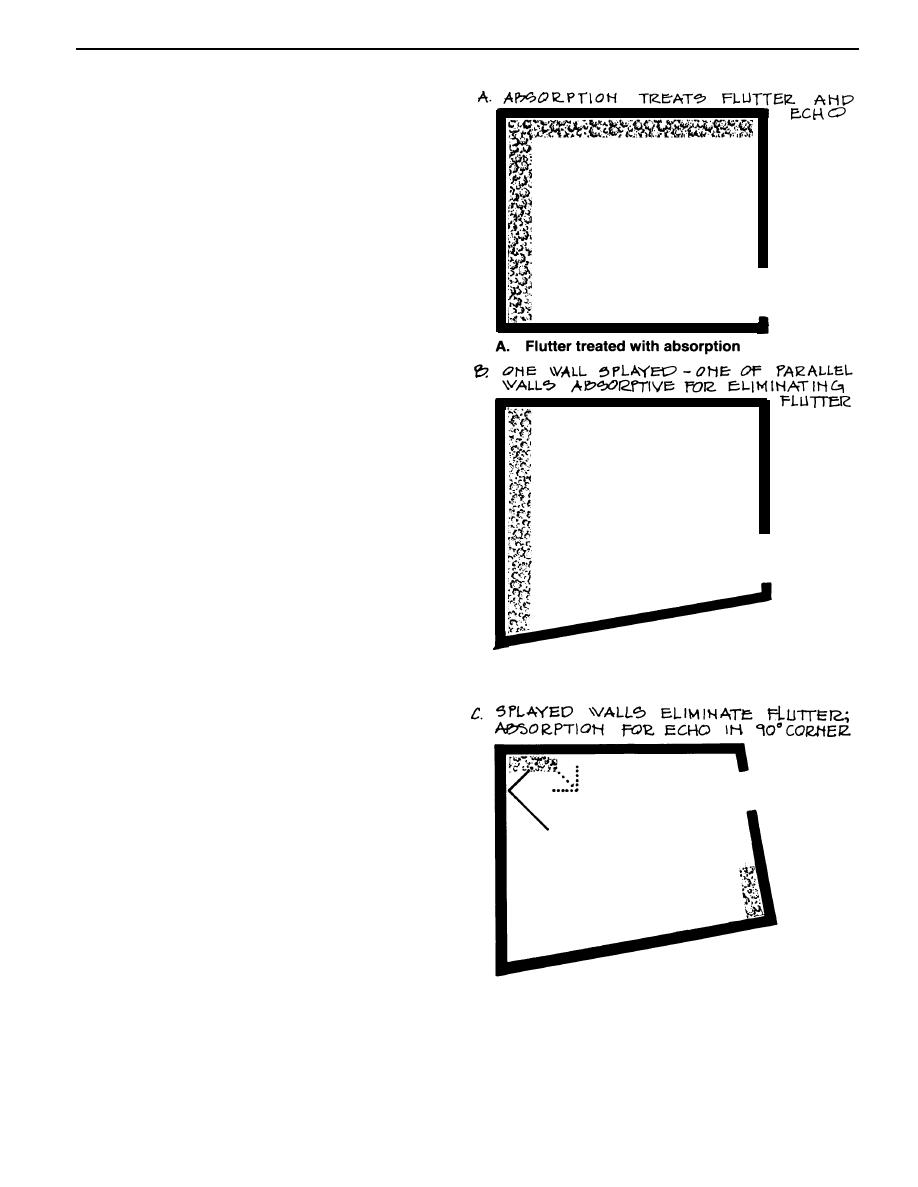
DG-1110-3-119
Design Guide: Band Training Facilities
March 1983
Practical Approaches for Accoustic Construction
tains anywhere along a track, without necessarily cover-
ing a whole wall.
Attention should be paid to the durability and maintainabil-
ity of materials. As shown in Figure 5-21, the wall treat-
ments extend almost down to the floor, which they must,
because otherwise there would be a zone of uncontrolled
reflections between the lower, untreated walls. This
requires particularly durable facing over the fiberglass panels.
Curtains can be replaced more readily than panels but
if their durability is a real concern, their extent could be lim-
ited from the track (at or near the ceiling) down to about
7' above the floor. In such a case, fixed treatment may be
required on the lower portion of the wall.
D. Group Practice Rooms
The recommended treatment of Group Practice Rooms
falls in between that of Main Rehearsal, described above,
and Individual Practice, which follows. Large Group Prac-
tice Rooms should be similar to Main Rehearsal Rooms,
except reflective inserts in the ceiling normally are not
required. Curtains for variability remain advisable. Small
Group Practice Rooms might more resemble Individual
Practice, with no or minimal acoustical variability.
E. Individual Practice Rooms
The recommended treatment of Individual Practice Rooms
is a smooth, hard floor, with a suspended acoustic tile
ceiling. Some wall treatment is recommended regardless
of room shape; and it should be at least 4' high, starting
about 2'-6" above the floor, which puts it in the height range
of musicians' instruments and ears. The fist rule in locat-
ing the treatment is to eliminate flutter, as described in Fig-
ure 5-22. Although distribution across several walls is
B. Flutter treated with absorption and
desirable for improved diffusion, Individual Practice Rooms
are generally too small to allow a "patchwork" of reflec-
a splayed wall
tive and absorptive surfaces.
It should be remembered that some ceiling materials only
absorb sound. These include fiberglass lay-in panels,
which are extremely absorptive (NRC 0.90). If, however,
the suspended ceiling also must attenuate sound (for
example, if it is hung below a continuous deck), then the
choice is limited to attenuation-rated tiles and panels,
which are made of mineral fiber, often foil-backed. They
are less absorptive (NRC 0.60), but still adequate in most
cases.
Prefabricated practice modules require no additional
treatment. Their design incorporates ample areas of very
absorptive finishes--most typically, perforated metal over
several inches of fiberglass. Because of this and because
of their confined size, they are even more "dead" than
conventionally built practice rooms, treated as recommended.
C. Corner echo eliminated with absorp-
tion; flutter eliminated with wall
splays
Figure 5-22.
Absorption and Room Shape to Treat
Acoustical Problems
5-25


 Previous Page
Previous Page
